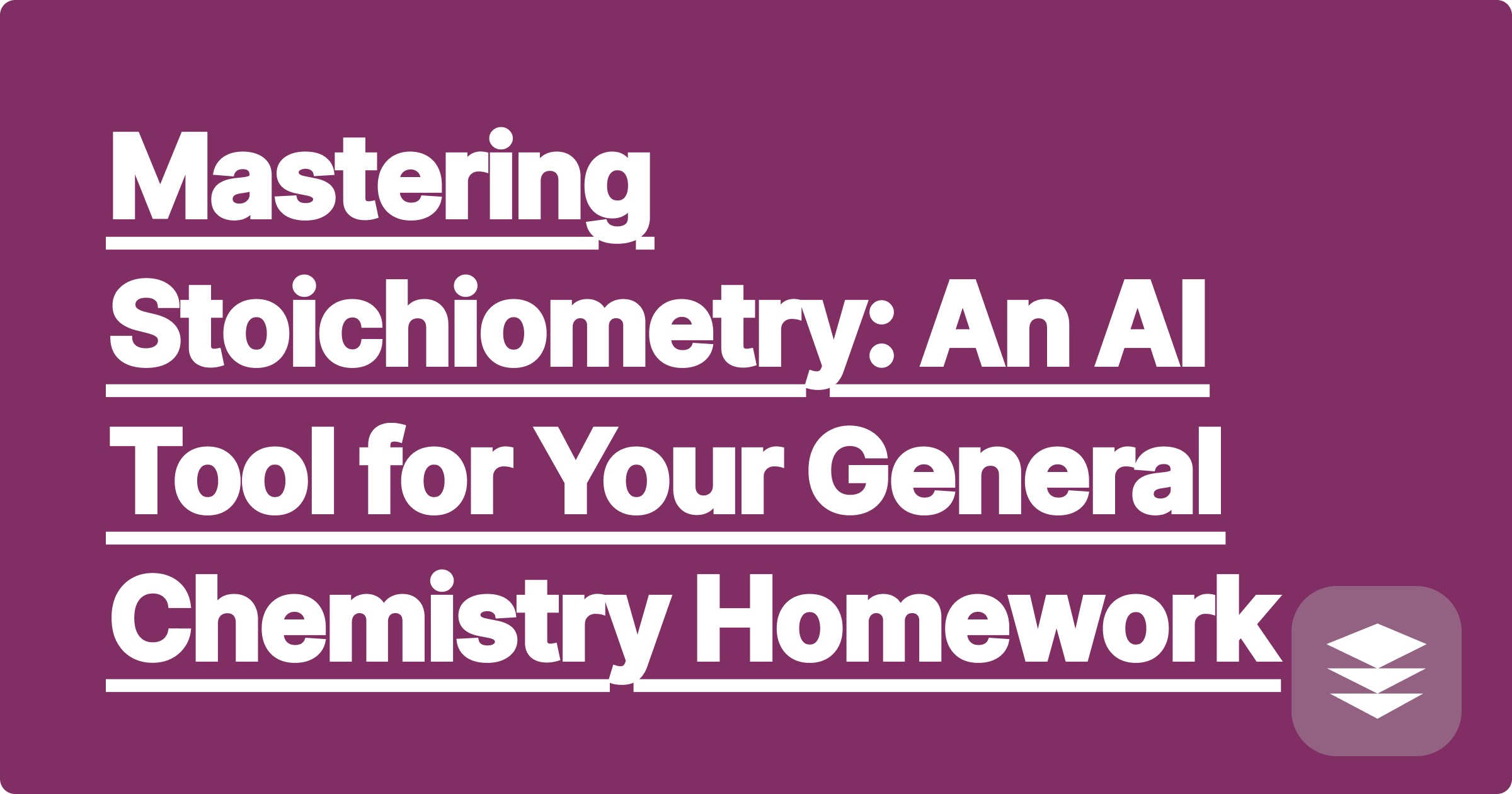
Welcome to General Chemistry. You’ve learned about atoms and molecules, and now you’ve hit the first major hurdle for many students: stoichiometry. It’s the art of calculating the amounts of reactants and products in chemical reactions, and it is the foundation for almost everything else you'll do in chemistry.
The process seems straightforward: balance the equation, convert grams to moles, use the mole ratio, and convert moles back to grams. Yet, a tiny mistake in any one of those steps—a wrong molar mass, an inverted conversion factor—can lead to a completely wrong answer. It’s incredibly frustrating.
What if you had an expert assistant that could walk you through every single calculation, showing you precisely where units cancel and how the final answer is derived? This is the power of a stoichiometry calculator step by step AI. With a powerful chemistry homework solver, you can stop making frustrating mistakes and finally master the process.
Stoichiometry isn't necessarily hard conceptually, but it is notoriously unforgiving. The most common errors are not from a lack of understanding, but from small, easy-to-make mistakes:
These small errors can cost you major points on homework and exams.
An AI tool like GPAI Solver is designed to eliminate these common errors by providing a clear, transparent, and perfectly executed roadmap for every problem.
Let's walk through how it would solve a classic stoichiometry problem:
The Problem: "How many grams of water (H₂O) are produced from the combustion of 10.0 grams of methane (CH₄) with excess oxygen (O₂)? The unbalanced equation is: CH₄ + O₂ → CO₂ + H₂O"
GPAI Solver's Step-by-Step Process:
[Image: A clean, step-by-step breakdown of the stoichiometry problem on the GPAI Solver interface, with each calculation and unit conversion clearly shown. Alt-text: A stoichiometry calculator showing a step by step solution.]
Q1: Can this AI handle limiting reactant problems?
A: Yes. For limiting reactant problems, the AI will perform the stoichiometry calculation twice—once for each reactant. It will then clearly identify which reactant produces the lesser amount of product, state that it is the limiting reactant, and use that value for the final answer (the theoretical yield).
Q2: What about percent yield calculations?
A: Absolutely. If you provide the theoretical yield (or have the AI calculate it) and the actual yield from an experiment, the AI can quickly calculate the percent yield using the formula (Actual / Theoretical) * 100%.
Q3: How is this better than a simple online stoichiometry calculator?
A: Most online calculators are "black boxes." You input numbers and get an answer, but you don't see the process. A powerful chemistry homework solver like GPAI shows you the entire logical path, including the balanced equation and all the dimensional analysis steps. This makes it an invaluable learning and verification tool, not just an answer machine.
Stoichiometry is a gateway to success in all future chemistry courses. Don't let frustrating calculation errors hold you back. By using an AI tool to guide your practice and check your work, you can build the confidence and mastery you need to ace your homework and your exams.
Ready to perfect your stoichiometry skills?
[Try GPAI Solver today. Upload your toughest chemistry problem and get a clear, step-by-step solution. Sign up now for 100 free credits.]
How to Ace Your Next Multiple Choice Exam with an AI Question Generator
GPA Booster: How Top Students Use AI to Study Smarter,
Overcoming Math Anxiety: A Guide to Using AI as Your Friendly Tutor
The 'Humanizer' Feature: How GPAI Makes AI Solutions Undetectable
Beyond Summaries: How GPAI's 'Notetaker' Reconstructs Whiteboard Diagrams
From Multiple Files to One Master Cheatsheet: A Guide to the AI Builder
Is GPAI's 'Handwriting' Better Than a Font? A Realism Test
Unlocking Your 'Recent' Panel: How to Manage Your AI-Powered Study History
How to Solve Differential Equations with an AI Step-by-Step Solver
Mastering Stoichiometry: An AI Tool for Your General Chemistry Homework